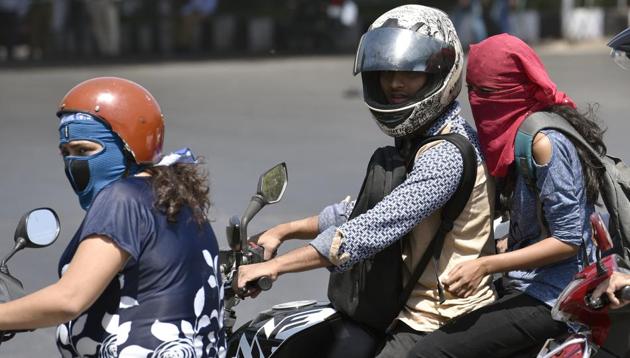‘Lack of clouds and humidity responsible for the heat wave condition in Maharashtra’
Weathermen said that an anti-cyclone trough was responsible for the scorching heat in the state
Clear skies in parts of Maharastra have contributed to the heat wave conditions in the state.

Weathermen said that an anti-cyclone trough was responsible for the scorching heat in the state.
“This phenomenon inhibits cloud formation. As a result, areas with heat wave conditions have clear skies; causing solar radiation to directly reach the earth’s surface and heat it up,” said DS Pai, scientist, India Meteorological Department, Pune.
Heat or severe heat waves refers to a prolonged period of excessively hot weather beyond a threshold temperature over a region that could also be highly humid. Heat waves are confined to the north, northwest, central and the eastern coastal regions of India from March to June.
Pai added two other outcomes as a result of the anti-cyclone trough.
“The anti-cyclone trough causes the air to descend in the atmosphere. One may not feel it since it’s a slow process, but this warms the air through a process called adiabatic warming. Secondly, it also brings air from the north to central parts of India, leading to above normal temperatures.”
According to climatologists, heat waves are projected to be more intense over India and will occur more frequently in future. An analysis by Pune-based IMD found that heat waves and severe heat waves have increased in India over the past 50 years (1961-2010), with Nellore in Andhra Pradesh being most prone to heating up.
Between 1961 and 2010, more than half the weather stations – 57 of 103 – across India reported heat waves between March and July — an average of 550 days. Severe heat wave was observed for an average of 60 days with 18 of the 103 stations most affected over five decades.
Another study by the Application Laboratory of Japan Agency for Marine-Earth Science and Technology (APL-JAMSTEC) and the Indian Institute of Tropical Meteorology at Pune revealed that heat waves have their origin as far as the North Atlantic and Pacific oceans, and identified two major patterns — one that affects major parts of the Indian subcontinent, including north-central India, and the other affecting only the eastern coastal regions of India.
Between 1983 and 2013, north and central India experienced 19 heat wave conditions. The east coast of India recorded 13 heat wave events between 1983 to 2012.
The heat wave of 1988 caused an estimated 1,300 deaths. Around 2,042 people and 3,054 people died in 1998 and 2003, respectively.
READ MORE
46.5 degrees Celsius recorded in Maharashtra town is wrong: IMD
Far-off oceans fuelling heat wave




